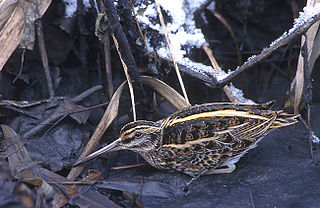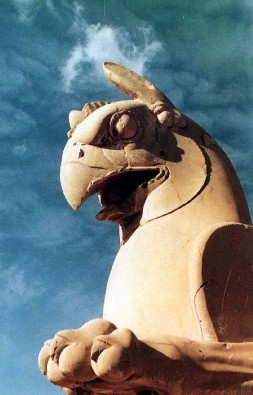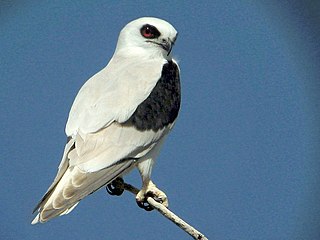
Eagle is the common name for many large birds of prey of the family Accipitridae. Eagles belong to several groups of genera, some of which are closely related. Most of the 68 species of eagles are from Eurasia and Africa. Outside this area, just 14 species can be found—2 in North America, 9 in Central and South America, and 3 in Australia.

In Greek mythology, Icarus was the son of the master craftsman Daedalus, the architect of the labyrinth of Crete. After Theseus, king of Athens and enemy of Minos, escaped from the labyrinth, King Minos suspected that Icarus and Daedalus had revealed the labyrinth's secrets and imprisoned them—either in a large tower overlooking the ocean or the labyrinth itself, depending upon the account. Icarus and Daedalus escaped using wings Daedalus constructed from feathers, threads from blankets, clothes, and beeswax. Daedalus warned Icarus first of complacency and then of hubris, instructing him to fly neither too low nor too high, lest the sea's dampness clog his wings or the sun's heat melt them. Icarus ignored Daedalus’ instructions not to fly too close to the sun, causing the beeswax in his wings to melt. Icarus fell from the sky, plunged into the sea, and drowned. The myth gave rise to the idiom, "fly too close to the sun."

Falconry is the hunting of wild animals in their natural state and habitat by means of a trained bird of prey. Small animals are hunted; squirrels and rabbits often fall prey to these birds. Two traditional terms are used to describe a person involved in falconry: a "falconer" flies a falcon; an "austringer" flies a hawk or an eagle. In modern falconry, the red-tailed hawk, Harris's hawk, and the peregrine falcon are some of the more commonly used birds of prey. The practice of hunting with a conditioned falconry bird is also called "hawking" or "gamehawking", although the words hawking and hawker have become used so much to refer to petty traveling traders, that the terms "falconer" and "falconry" now apply to most use of trained birds of prey to catch game. Many contemporary practitioners still use these words in their original meaning, however.

The expression as the crow flies is an idiom for the most direct path between two points, rather similar to "in a beeline". This meaning is attested from the early 19th century, and appeared in Charles Dickens's 1838 novel Oliver Twist:
We cut over the fields at the back with him between us – straight as the crow flies – through hedge and ditch.

The simurgh is a benevolent, mythical bird in Persian mythology and literature. It is sometimes equated with other mythological birds such as the phoenix and the humā, though it must be understood as a completely different mythological creature of its own. The figure can be found in all periods of Iranian art and literature and is also evident in the iconography of Georgia, medieval Armenia, the Eastern Roman Empire, and other regions that were within the realm of Persian cultural influence.

The jack snipe or jacksnipe is a small stocky wader. It is the smallest snipe, and the only member of the genus Lymnocryptes. Features such as its sternum make it quite distinct from other snipes or woodcocks.

The down of birds is a layer of fine feathers found under the tougher exterior feathers. Very young birds are clad only in down. Powder down is a specialized type of down found only in a few groups of birds. Down is a fine thermal insulator and padding, used in goods such as jackets, bedding, pillows and sleeping bags. The discovery of feathers trapped in ancient amber suggests that some species of non-avian dinosaur likely possessed down-like feathers.

In Slavic mythology and folklore, the Firebird is a magical and prophetic glowing or burning bird from a faraway land which is both a blessing and a harbinger of doom to its captor.

In Abrahamic and European mythology, medieval literature and occultism, the language of the birds is postulated as a mystical, perfect divine language, Adamic language, Enochian, angelic language or a mythical or magical language used by birds to communicate with the initiated.

Feather cloaks have been used by several cultures.

The Huma, also Homa, is a mythical bird of Iranian legends and fables, and continuing as a common motif in Sufi and Diwan poetry. Although there are many legends of the creature, common to all is that the bird is said never to alight on the ground, and instead to live its entire life flying invisibly high above the earth.

The Feather of Finist the Falcon or Finist the Falcon is a Russian fairy tale collected by Alexander Afanasyev in Narodnye russkie skazki. It is Aarne–Thompson type 432, the prince as bird. Other tales of this type include The Green Knight, The Blue Bird, and The Greenish Bird.

The letter-winged kite is a small, rare and irruptive bird of prey that is found only in Australia. Measuring around 35 cm (14 in) in length with a wingspan of 84–100 cm (33–39 in), the adult letter-winged kite has predominantly pale grey and white plumage and prominent black rings around its red eyes. It gains its name from the highly distinctive black underwing pattern of a shallow 'M' or 'W' shape, seen when in flight. This distinguishes it from the otherwise similar black-shouldered kite. This species is also the only nocturnal species within the order Accipitriformes despite few differences found in its visual anatomy to other closely related kites.

The Tortoise and the Birds is a fable of probable folk origin, early versions of which are found in both India and Greece. There are also African variants. The moral lessons to be learned from these differ and depend on the context in which they are told.

The Salmon Fly - How to Dress It and How to Use It is a fly fishing book written by George M. Kelson published in London in 1895 by Messers. Wyman & Sons, Limited. This Victorian guide to fly fish tying built up the illusion that angling for salmon required feathers of exotic bird species.

Jabberwocky, an adult pantomime by Andrew Kay, Malcolm Middleton and Peter Phillips, is a musical based on the English 1871 poem of the same name by Lewis Carroll. The music, book and lyrics are by Malcolm Middleton, Andrew Kay and Peter Philips, with additional material by Robert Kay and by many members of the original cast.

The Goofus bird is a mythical, backwards-flying bird, originating in lumberjack folklore in North America. It is also known variously as the Filla-ma-loo bird or the Flu-fly bird.

In bird and mammal biology, altricial species are those in which the young are underdeveloped at the time of birth, but with the aid of their parents mature after birth. Precocial species are those in which the young are relatively mature and mobile from the moment of birth or hatching. Precocial species are normally nidifugous, meaning that they leave the nest shortly after birth or hatching. These categories form a continuum, without distinct gaps between them.
The Goose Wife is a mythical female character that appears in tales from the Inuit and other ethnic groups that dwell across the circumpolar Arctic region. The usual story is that the geese alight on land, become women by taking off their goose-skins and bathe in a lake. However, they are unaware that a human hunter is spying on them, and he steals the goose-skin of one of them, forcing her to be his wife. Due to the great similarities between both characters, the goose wife has been compared to the swan maiden, another female that alternates between human and bird forms.
The Beautiful Palace East of the Sun and North of the Earth is a Swedish folktale collected from Smaland by Swedish folktale collectors George Stephens and Gunnar Olof Hyltén-Cavallius. It features versions of the swan maiden, a mythic female character that alternates between human and animal shapes.
















